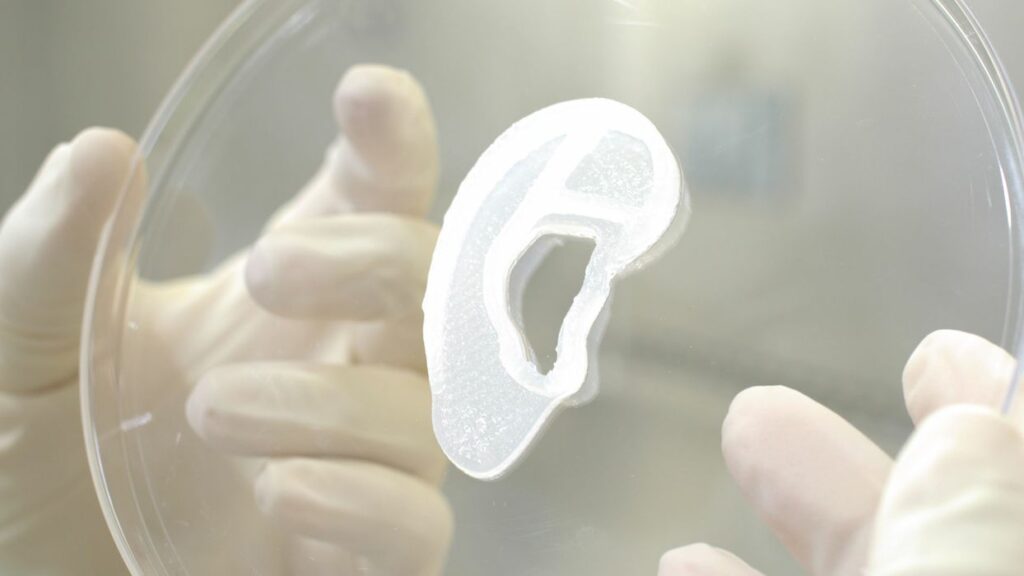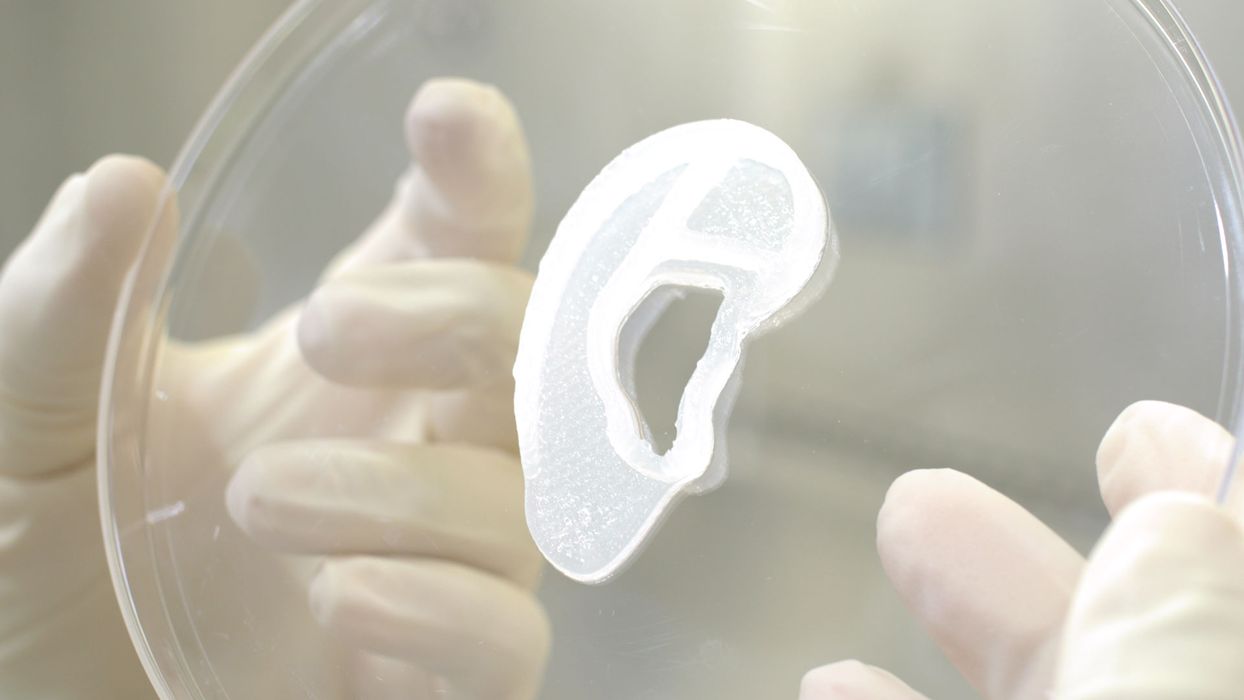
In a milestone development, 3DBio Therapeutics have completed reconstruction of a human ear with 3D printing.
Working with the Microtia-Congenital Ear Deformity Institute, 3DBio has used their AuriNovo technology to create a personalized ear implant using 3D bioprinted living tissue.
This type of reconstructive surgery is typically performed on patients with a congenital ear deformity where the ear structure is compromised — or missing entirely. The surgery basically creates a properly shaped ear, which dramatically improves the patient’s hearing ability.
3DBio explains AuriNovo:
“AuriNovo is a patient-specific, living tissue implant created using 3D-bioprinting technology for surgical reconstruction of the outer ear in people born with microtia Grades II-IV. AuriNovo™ is designed to provide a treatment alternative to rib cartilage grafts and synthetic materials traditionally used to reconstruct the outer ear of microtia patients. The U.S. Food and Drug Administration (FDA) has granted AuriNovo Orphan Drug and Rare Pediatric Disease Designations.”
Arturo Bonilla, MD, performed the surgery and said:
“This study will allow us to investigate the safety and aesthetic properties of this new procedure for ear reconstruction using the patient’s own cartilage cells. My hope is that AuriNovo will one day become the standard-of-care replacing the current surgical methods for ear reconstruction requiring the harvesting of rib cartilage or the use of porous polyethylene (PPE) implants. The AuriNovo implant requires a less invasive surgical procedure than the use of rib cartilage for reconstruction. We also expect it to result in a more flexible ear than reconstruction with a PPE implant. The AuriNovo living tissue implant is designed to provide a better solution for patients born with microtia by transforming their appearance and building their confidence and self-esteem.”
This is indeed a big milestone. While there have been human implants made from 3D printed parts previously, they have been made from non-living materials. Titanium hip implants, for example. This work involves living tissue, and could be among the first ever performed.
Over the years there have been many stories proposing the idea of 3D printed human organs, but the truth is that this is an extraordinarily complex space that has many years ahead to develop the necessary technologies and procedures.
However, this surgery is one of the early milestones on the way towards that goal. 3D printed cartilage is one of the more simpler human tissues to attempt, so it’s no surprise this would be one of the first to be successful.
The future will no doubt unfold with incrementally more complex tissue types being successfully 3D printed and used within the body.
Via BusinessWire and 3DBio

